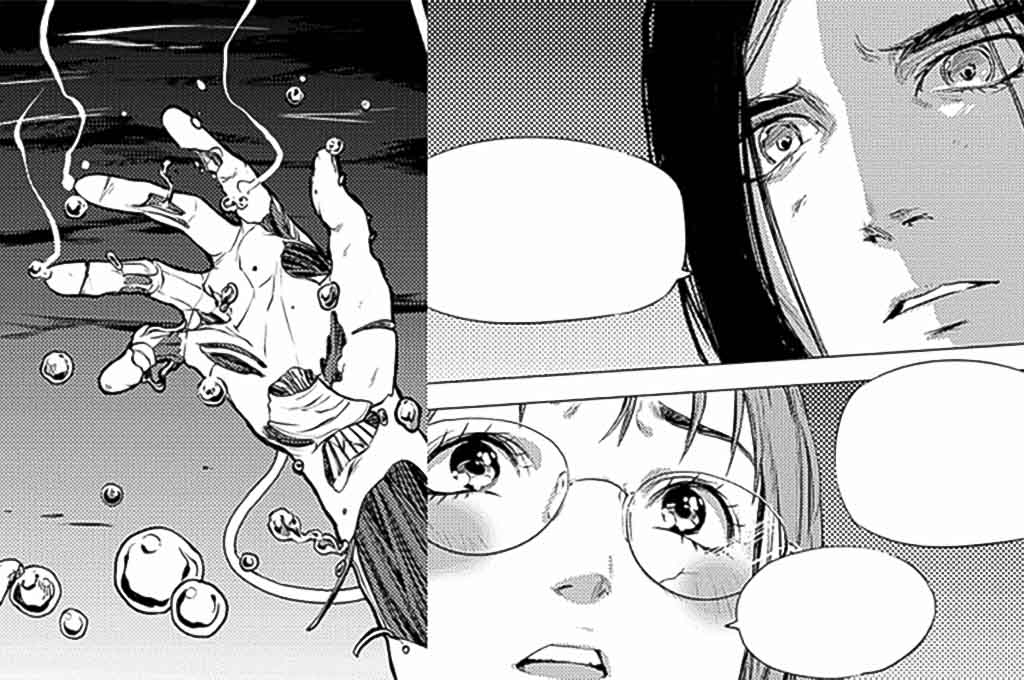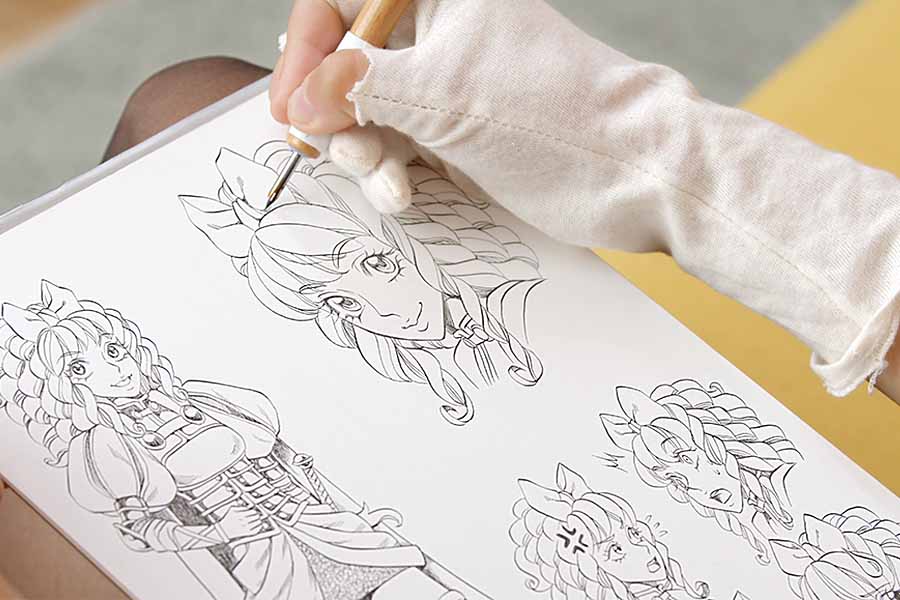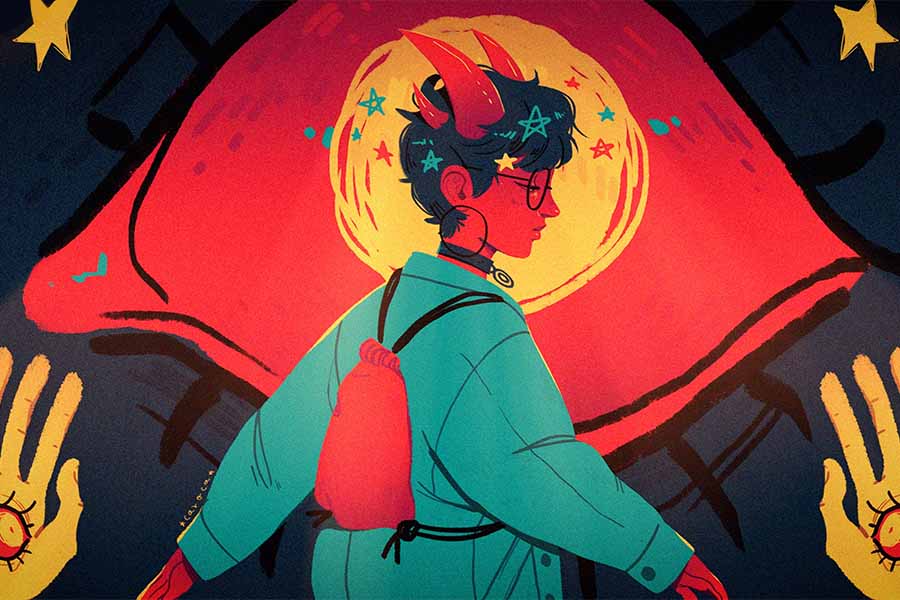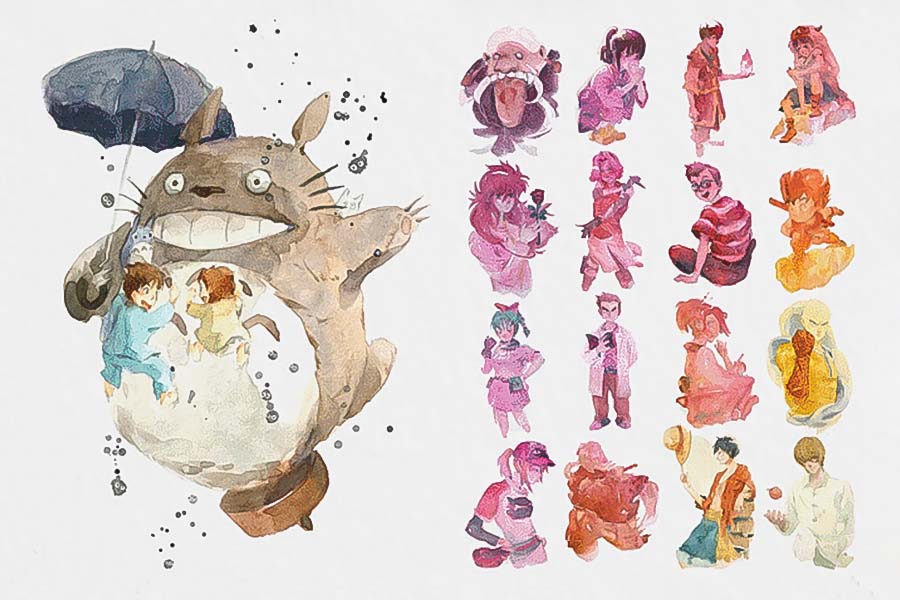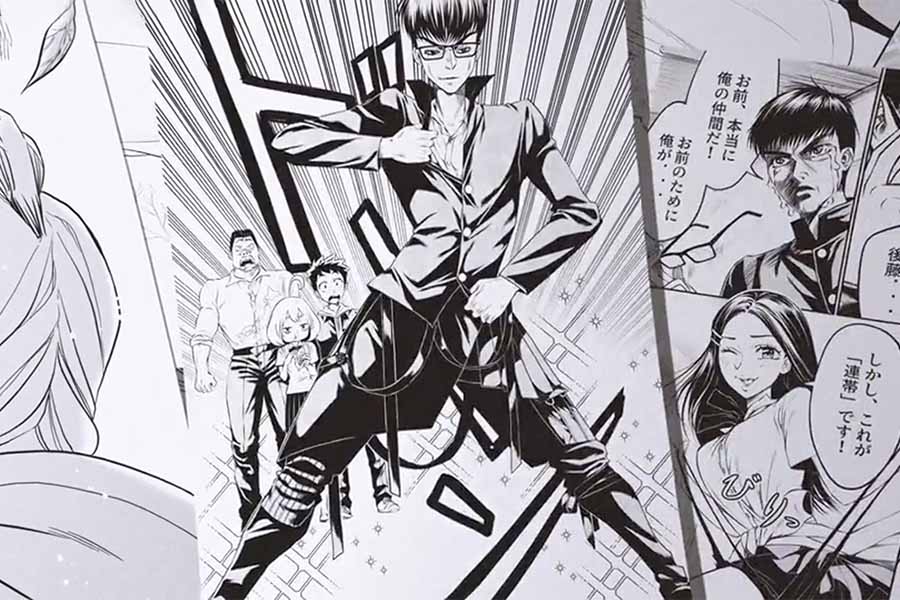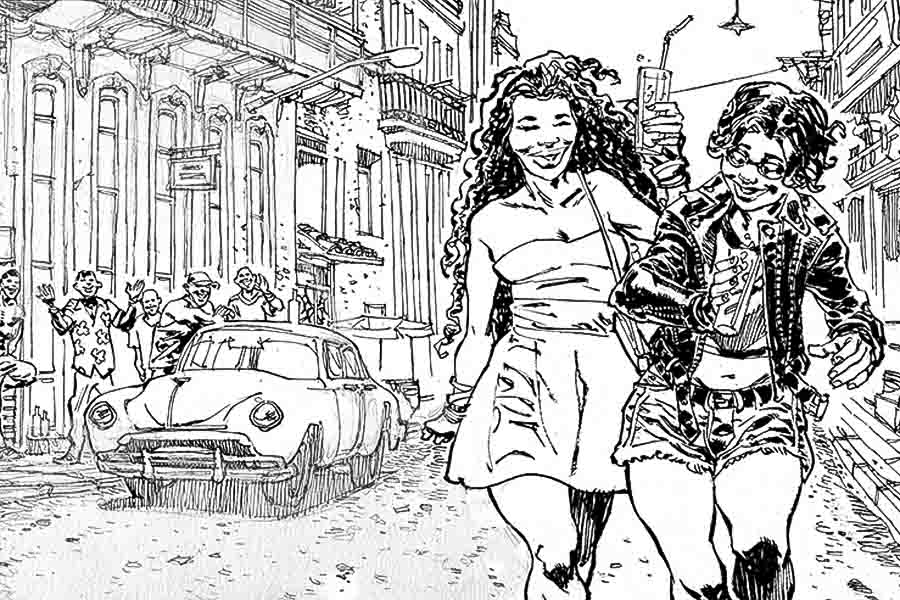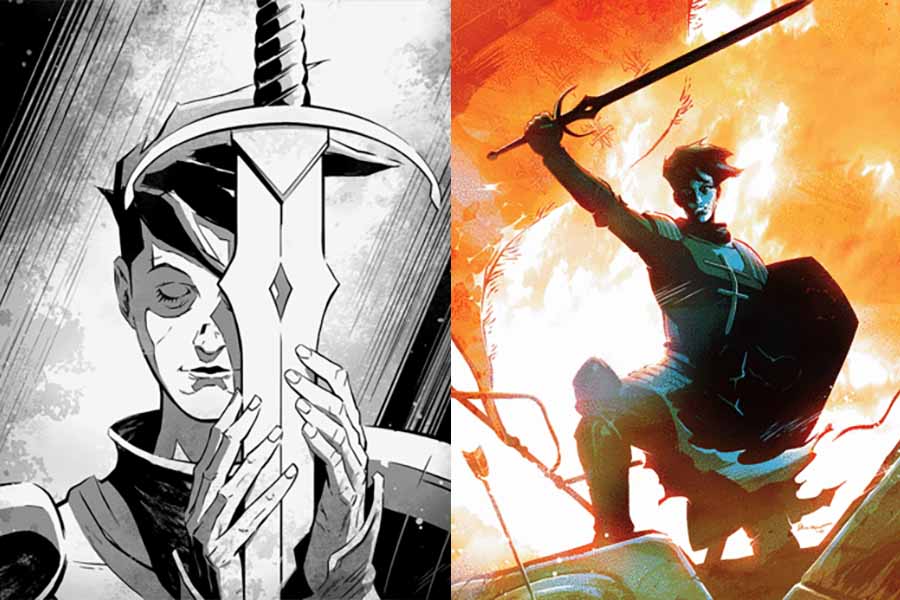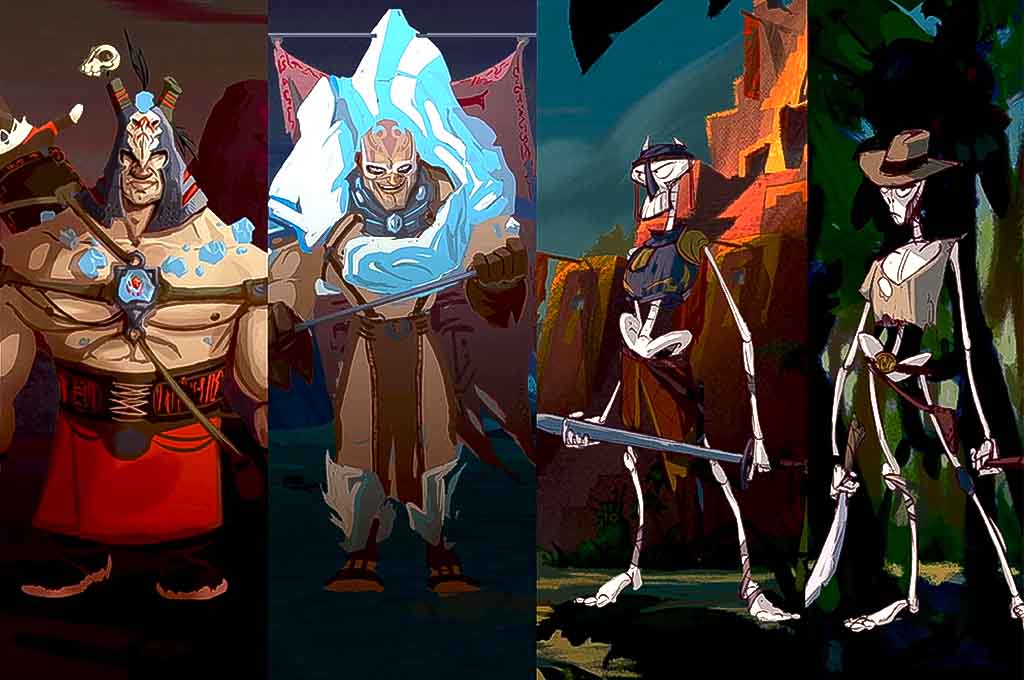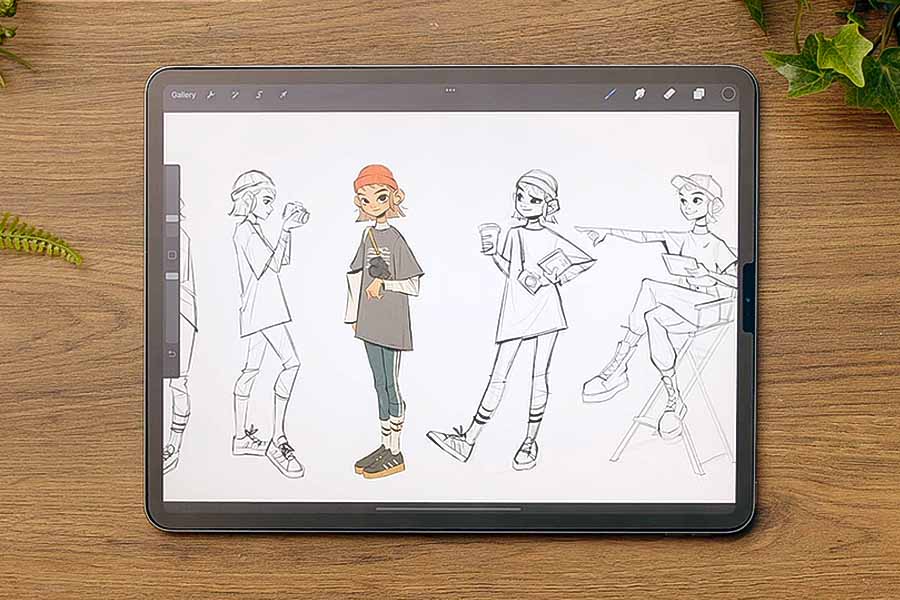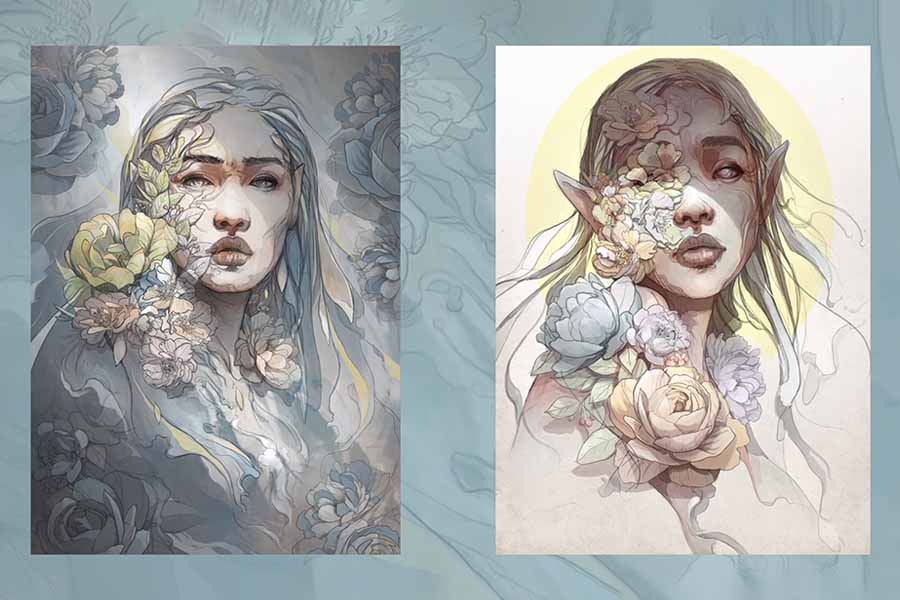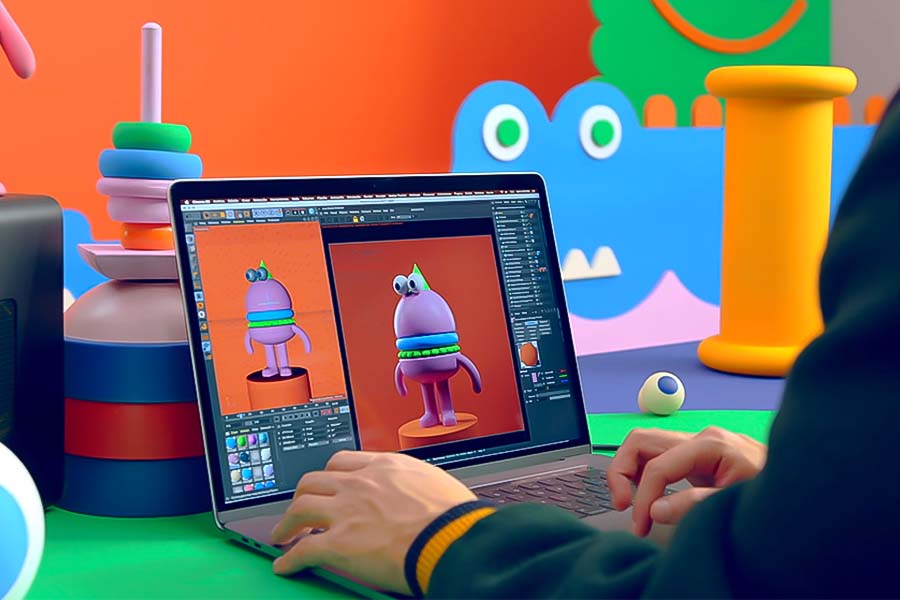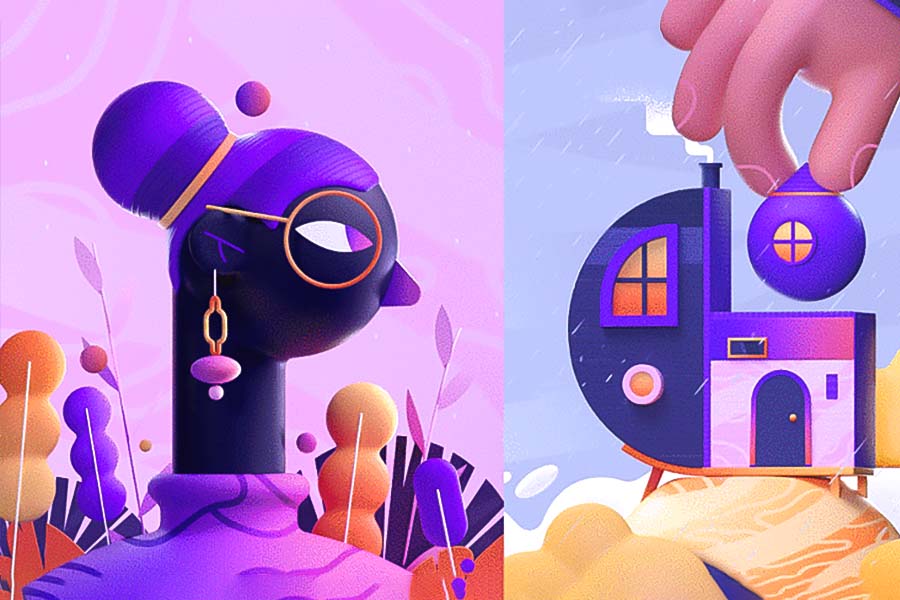The Designest may receive compensation from companies, products, and services featured in this publication. For more details, please refer to our Affiliate Disclosure page.
The style you draw in also matters. The methods you use to create a character for manga with a high probability won’t help you when you decide to try yourself in cinematographic art. To help you figure out this difference and get new knowledge, the collection I offer you includes all kinds of online classes that teach you different styles.
Comics, games, animation — you will indeed find something that you are interested in or dreamt of trying. Your current skill level won’t be a barrier, too — here I gathered the courses suitable for everyone, from total beginners to advanced users. All you need to see the impressive progress of yours is the will to grow, some free time and a good device.
Manga Drawing
It is hard to find a person who has never heard of manga. But if you are one of them, don’t worry, we will introduce it to you! Shortly speaking, manga is Japanese comics or graphic novels. It is mostly drawn in black and white, but sometimes you can come across some colorful ones. The distinctive feature of manga for a Western audience is that it has a right-to-left reading style.
If you are more into colored comics but want something different from the Western ones you are used to, you can also check out manhwa. It is Korean comics that are more often colorful and their focus is on characters’ design, as the backgrounds are less detailed than in the manga. Here there are some original techniques that Korean authors commonly use. Don’t worry, you’ll find a class about it in the section below, too.
Manga has developed its own visual language for all its aspects. Even the ways of showing the characters’ emotions differ from what you see in Western comics, so if you decide to give this style a try, you need to get some basic knowledge about it.
Drawing Manga Characters from Scratch
The online course teaches you how to create an entire model sheet in pencil in different perspectives and add details of your character in manga style. Giovana and Paulo, illustrators and authors of the class, show you all the techniques to give movement and personality to your work, starting with the concept to the final art.
The course starts with a brief introduction to manga and goes through the main styles and profiles. It helps you define the traits of your character, including gender, physical size, and motivation, seeing all the materials you need to create it. Sketching it from scratch, and creating the proportions of their body in detail will give life to your character right away. You’ll see the movement and volume techniques, the rules for clothing, and the proportions for the head and face.
To complete the project you will create a professional model sheet, with different poses and profiles in manga style. Giovana and Paulo also teach you how to scan and make the final adjustments on Photoshop. Lastly, you’ll get invaluable advice on how to get your work noticed through a physical or digital portfolio on social media.
Comics Drawing
Do you have memories of spending sleepless nights with favorite comics in hand under the blanket? Using your design and drawing skills you can turn from the binge reader to the author. In order to do it, you need to learn about the characteristic features of comics characters and some essential techniques for drawing them. With that, you’ll be able to create a memorable, attractive character and add your personal touch to it with your own drawing style.
The classes I offer you will give you all the knowledge of creating comics as well as help you improve your skills. Inking techniques, digital illustrations and even tips on using your character for your social media brand awareness — you’ll find all of it here. With their help you will be able to work in Marvel and DC style. Or any comics style you are a fan of. Just take your tool in hand and start practicing!
Inking Techniques for Comics and Illustration
This online class gives you an opportunity to familiarize yourself with professional inking techniques for comics and illustration, which you can take to any pencil drawings. You will learn helpful tricks to use the inking tools and apply them through various techniques.
The course’s author Sergio Bleda starts off by telling you what materials you need to work on inking comics and illustrations in a professional manner and will encourage you to experiment with different techniques. Once you get used to working with the tools, you will get to ink your first comic page. Sergio shows how to use the dry brush, to do hand-weaving, and due to that you will discover special effects such as splashing with a toothbrush or the use of mechanical weft.
The important part of the class is that the teacher walks you through different ways to get the gray: watery, with indicated gray or working with a card of that color. Finally, you will see the work of other professionals, which will help you to know and analyze the different styles and inking finishes — it is a very useful exercise when looking for and defining your own style.
Game and Animation Character Drawing
The overwhelming success of video games (that don’t decrease but grows as the years go by) has many reasons. And one of them, of course, is that the design and mechanics are becoming better from game to game. That goes for characters design, too. They become more lively and nowadays they really look like it is a real person, not the fruit of the designer’s hard labor.
Now you can approach your video game and animation characters, too. Even if you haven’t tried it before and only seen them on the screen, it will be enough to start working on your own one. All you need is the course from the gathering below and the device you’re going to work with.
Introduction to Design of Characters for Animation and Video Games
This course with 100% of positive reviews shows you how to design original characters for animation and video games using a simple technique centered around basic geometric shapes. It covers the basics of human anatomy and you get to know how to draw different body parts (head, torso, arms, hands, hips, legs, and feet) in a simplified way by studying proportions and shapes as well as bones and muscle groups.
With the guidelines of Jean Fraisse, concept artist and your teacher in this class, you analyze different characters from well-known animations to understand why they work. It helps you discover how to build engaging characters who convey a range of emotions to your audience and see how to position them in different poses while adhering to the principles of weight, movement, and body dynamics. Then, you’ll find out how to create striking facial expressions and apply everything you’ve learned to design your first character.
Once you’re done, Jean explains the main differences between animation and video game character drawing so you know what to focus on, and what to avoid, when creating each kind. After finishing your studying, you get to choose your favorite characters and put them together in a lineup for your final project.
Cinematographic Art
If you wondered how to create 3D or even 4D characters, you’ve come to the right place. The classes I gathered for you in this section will help you bring your art on a whole new level. You’ll be able to apply new skills to post your stunning artwork on social media and make your followers fascinated by it, work with content agencies or even animation studios.
These courses encompass all the knowledge and skills you need to get for creating 3D or 4D characters: you’ll get to know everything from the importance of color, lighting and composition to bringing your 3D artworks to 4D format. Choose the online class and watch your characters come alive on your screen.
Cinematic Digital Illustration with Photoshop
This online class is the chance to explore composition, color, and lighting to create compelling concept art inspired by photographic references. Izzy Burton, the teacher, shares the tools and knowledge needed to turn a photographic reference into a compelling piece of concept art using Photoshop. With her help, you’ll dive into the world of digital illustration and create cinematic scenes inspired by your surroundings.
First of all, the class explains how to find a good photo reference for your illustration. Then you plunge into composition and the importance of values in building strong pieces of art. Izzy shares how to design with storytelling in mind before discussing color, texture, lighting and bringing your imagined world to life through characters. You get to know the techniques of adding texture and color, and learn how to work lighting into your image to focus the viewer’s eye. It enables you to discover all the details needed to make your scene tell a story. Then, Izzy shows you the ways to breathe life into your illustration with lifelike objects like washing lines and plants before putting the finishing touches on your piece.
To finish the course, its author gives a few tips for exporting your image and sharing it on a platform of your choice. She also discusses best practices for using social media as an artist before looking at how to challenge yourself and continue your artistic journey.


